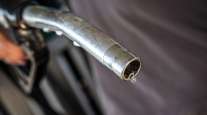DOE Considers Opening SPR, Official Says, as Diesel Rises 0.5¢
This story appears in the April 2 print edition of Transport Topics.
U.S. retail diesel prices edged up a half-cent a gallon last week, continuing a nine-week string of increases and bringing the national average to $4.147 a gallon, the Department of Energy reported.
Meanwhile, a DOE official told a House subcommittee that, while there is no specific proposal to release oil from the Strategic Petroleum Reserve, the idea is “not off the table.”
“It is being considered,” Charles McConnell, acting assistant secretary for DOE’s Office of Fossil Energy, told the House appropriations subcommittee on energy and water development. “It has been in consideration for some time, and no decision has been made.”
Although the price increase was modest last week, diesel is at the highest level since Aug. 18, 2008, when trucking’s main fuel was $4.207 a gallon, DOE said after its March 26 survey of fueling stations.
Diesel was selling for $3.932 a year ago and has jumped 36.4 cents since the start of 2012.
DOE also said the average retail gasoline price increased 5.1 cents to $3.918 a gallon. Gasoline has increased 52.9 cents in the past nine weeks and is selling for 32.2 cents more than a year ago.
Neil Gamson, an economist for the Energy Information Administration, said it was unlikely there would be any relief at the pump, in part because of political turmoil in the Middle East.
Gamson said EIA’s latest forecast calls for diesel prices to remain above $4 per gallon at least through February 2013. He blamed the high cost of crude oil, which closed at $102.78 a barrel on March 29 on the New York Mercantile Exchange.
Crude has remained above the $100-a-barrel mark since Feb. 13, rising to $109.77 on Feb. 24.
“Diesel prices may peak at $4.20 or $4.21 a gallon in April or May,” Gamson said. “It depends on the price of crude oil.”
Diesel’s record high was $4.764 on July 14, 2008.
“We don’t know how to do much for it, other than fuel surcharges in place with a lot of customers,” said Kirk Crowley, vice president of High Country Transportation, Cortez, Colo.
High Country is a 130-truck carrier — 40 of them reefers and the rest dry vans — that operates locally, regionally and nationwide, mostly west of the Mississippi River, Crowley said.
Crowley said although High Country does have some “fairly decent” discount price arrangements with truck-stop chains, he said he’s seeing a discouraging new trend: The gap between the normal pump price and the discount price is narrowing.
“Usually there’s a pretty good spread between the retail price on the pump and the price that they’re giving us,” Crowley said. “But I looked [during late March] and that price is the same right now. It’s the first time I’ve seen things like that.”
For instance, Crowley said, the company was getting a good price in Denver, but in Illinois and Ohio the retail and discount price were the same.
He said the spread in some areas is as large as 20 cents, but in the middle of the past decade it could be as much as 45 cents a gallon.
Another trucking executive said his company has no choice but to ride out the wave of high prices.
“We don’t do a fuel surcharge, although I know it’s very popular,” Jimmy Harris, president of JA Harris Trucking Inc., Houston, said. “I’m more of a niche type carrier, so I don’t do long-term contracts with customers because of situations like we’re in today.”
Harris said the lack of a surcharge, along with a low company overhead, gives him the flexibility to increase or drop his rates at will. One way he saves on fuel costs is not to pay an employee to keep track of surcharges, he said.
Harris Trucking owns about 40 flatbed trucks and hauls mostly heavy equipment and products, Harris said.
“I’m able to absorb a little bit more fuel,” Harris said. “My customer doesn’t have to have an every week situation of fuel prices going up and down on an invoice.”
“I am more expensive than the rest,” he added. “When fuel does go up to where I start feeling it, then I just increase my rates.”
Meanwhile, there has been talk in Washington about possibly opening the national Strategic Petroleum Reserve. The SPR, an emergency response tool the president can use when facing disruptions and emergencies in oil supplies, currently holds about 800 million barrels of oil.
The most recent SPR release was in June, when the United States sold 30 million barrels to 15 companies because of the protracted loss of 2 million barrels per day from Libya.
Oil also was released from the SPR after Hurricane Katrina in 2005 and during Operation Desert Storm in 1991.
Companies that accept SPR oil are required to return equal amounts when the crisis that led to the release is over and fuel supplies and prices both have returned to lower levels.




